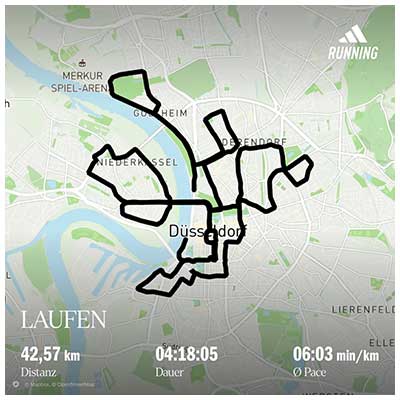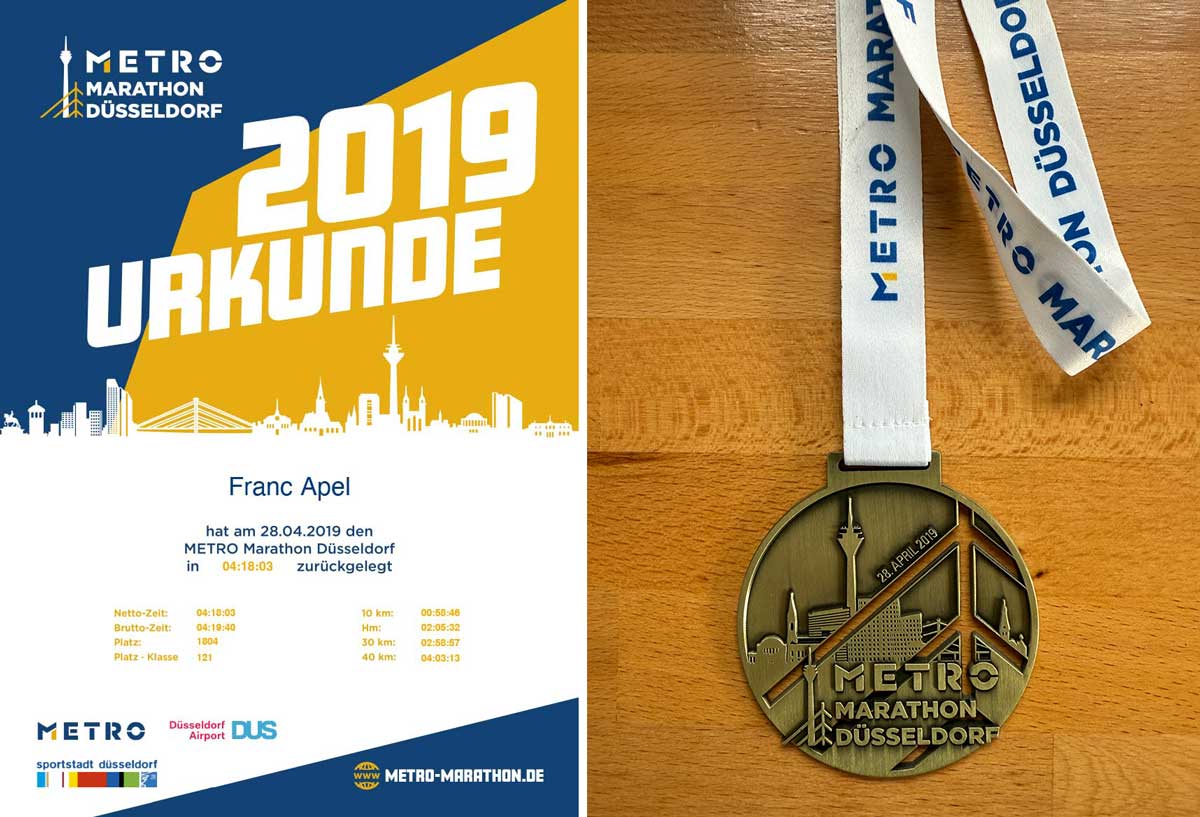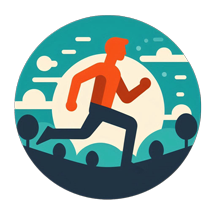Running a marathon had always been a dream of mine. After months of preparation, the day had finally arrived. Standing at the start line, ready to tackle the 42.195 kilometers, I felt a mix of excitement and nerves. As long as nothing unexpected happened along the way, the finish line was within reach.
About the Race
 I had immense respect for the marathon distance. No matter how well you train, you can never be sure how your body and mind will hold up on race day. Even small factors can make or break your performance.
I had immense respect for the marathon distance. No matter how well you train, you can never be sure how your body and mind will hold up on race day. Even small factors can make or break your performance.
The months of preparation had gone well. I built a solid fitness base with regular runs between 10 and 20 kilometers. Two long runs, each close to 30 kilometers, tested my endurance and mental resilience. Six weeks before the marathon, I participated in the Syltlauf, a 33.333-kilometer race, as a final test for my training and stamina.
I was especially grateful to my running friend Pit, who had completed many marathons. He joined me for several long training runs, offering invaluable advice and encouragement. Without his support, I probably wouldn’t have been as disciplined in my preparation. Pit was also running the marathon, and his presence gave me an extra boost of confidence.
The marathon became a family event. My wife and son participated in the half-marathon distance, and having family support made the day even more special. Thanks to our relatives in Düsseldorf, the logistics were stress-free, allowing us to focus fully on the race.
Event and Organization
Large events like the Düsseldorf Marathon are known for their excellent organization, and this race was no exception. From collecting the race numbers to the post-race care, everything ran like clockwork.
The aid stations along the route were well-stocked with water, isotonic drinks, and snacks. Friendly volunteers and enthusiastic spectators lined the course, creating an atmosphere that made the run even more enjoyable.
The cheering crowds were one of the highlights of the day. People of all ages gathered to support the runners, holding up signs and shouting words of encouragement. Their energy was contagious and kept me motivated throughout the race.
The Course
For my first marathon, I wanted a straightforward, flat route with no major surprises. The Düsseldorf Marathon offered exactly that, with a scenic course mostly following the Rhine River.
My initial goal was simply to finish under five hours. During training, I realized that a time of around 4 hours and 30 minutes was realistic. With that in mind, I started the race cautiously optimistic.
The morning began cold, with low temperatures, but this was ideal for a long run. The course started along the Rhine and wound through various neighborhoods, crossing the Rhine Bridge into Oberkassel and back into the city center.
I quickly found my rhythm and felt comfortable with my pace. The first few kilometers flew by, and I was amazed at how relaxed I felt. Running along the river was especially enjoyable, with the peaceful scenery providing a welcome distraction.
To my surprise, the infamous “wall” that many runners hit after 30 kilometers never came. Around kilometer 37, I began to feel some pressure on my toes and thought I might have developed a blister. However, it turned out to be nothing more than fatigue from the prolonged effort. I adjusted my stride, switching to a midfoot strike, and managed to continue without significant discomfort.
The final stretch included Düsseldorf’s famous Königsallee, adding a touch of glamour to the route. From there, the course looped back to the Rhine and into the finish area.
Crossing the finish line was an indescribable feeling. I had completed the 42.195 kilometers, a distance I had approached with great respect and uncertainty. My finishing time of 4 hours, 18 minutes, and 3 seconds exceeded all my expectations.
Conclusion
Reaching the finish line was a deeply emotional experience. While I’ve participated in many races, crossing the line after my first marathon was something entirely different. I was overwhelmed with a mix of relief, pride, and joy. To my surprise, I even felt a few tears welling up—a rare reaction for me.
I had always said I would only run one marathon. The preparation demands significant time and discipline, which can be hard to balance with everyday life. Achieving my goal felt like the culmination of months of effort, and I was incredibly proud of myself.
Despite my initial resolve to run just one marathon, the thought of doing another eventually crept in. A new plan began to form, though that race turned out to be a completely different experience. But that’s a story for another time.
Why a Marathon Stays with You
A marathon is more than just a long run. It’s a test of physical and mental endurance, an experience that shows you what you’re truly capable of. I learned that while training and preparation are essential, a positive mindset and support from friends and family can make all the difference.
This first marathon will always hold a special place in my heart. It shaped me not only as a runner but also as a person. The memory of that day continues to inspire me to push past limits and embrace new challenges, both on and off the running course.
A marathon is a journey that begins with the first training run and ends with an overwhelming sense of accomplishment. For me, it was one of the most valuable experiences of my life—an achievement I’ll treasure forever, and one I encourage others to pursue.











